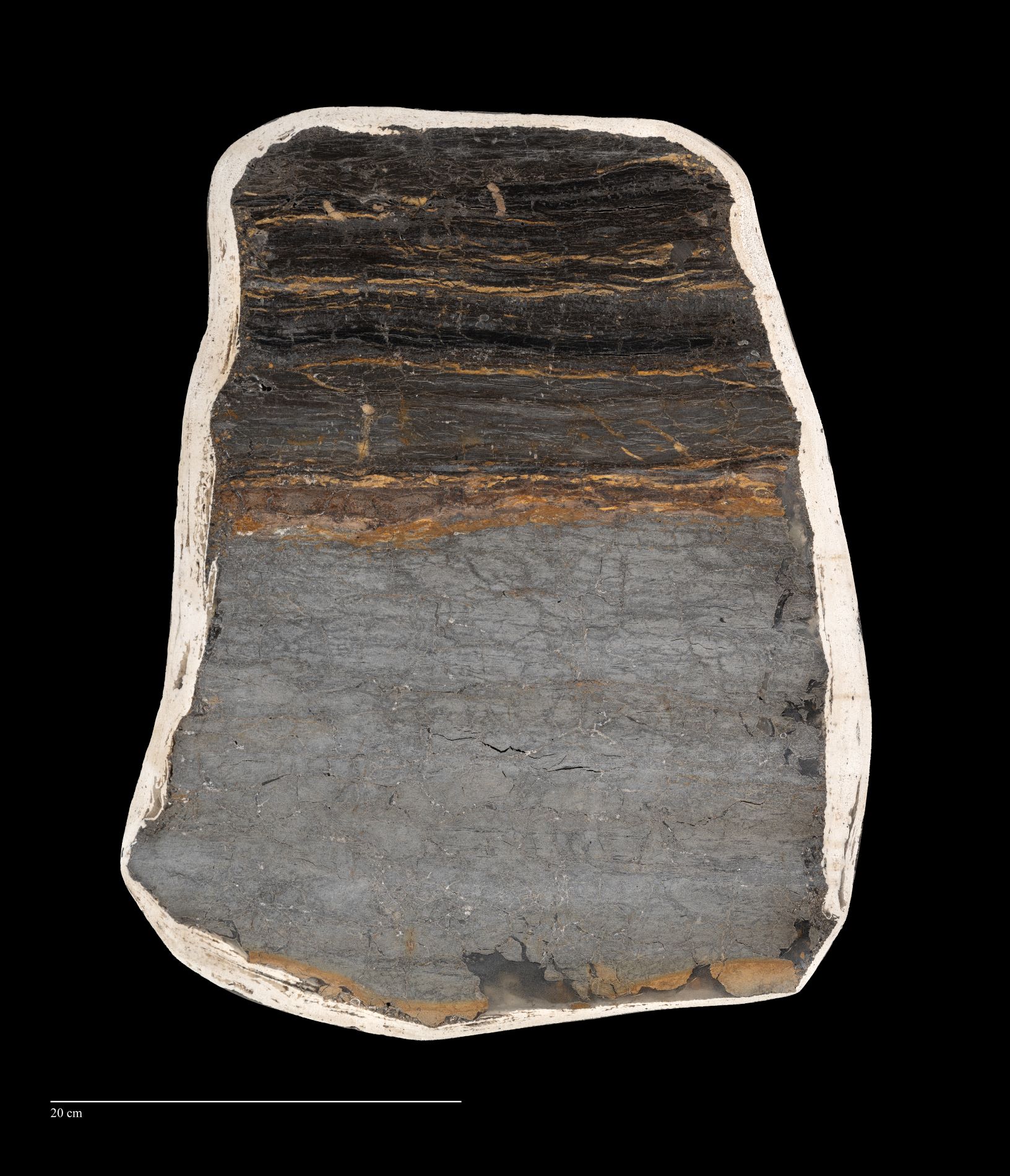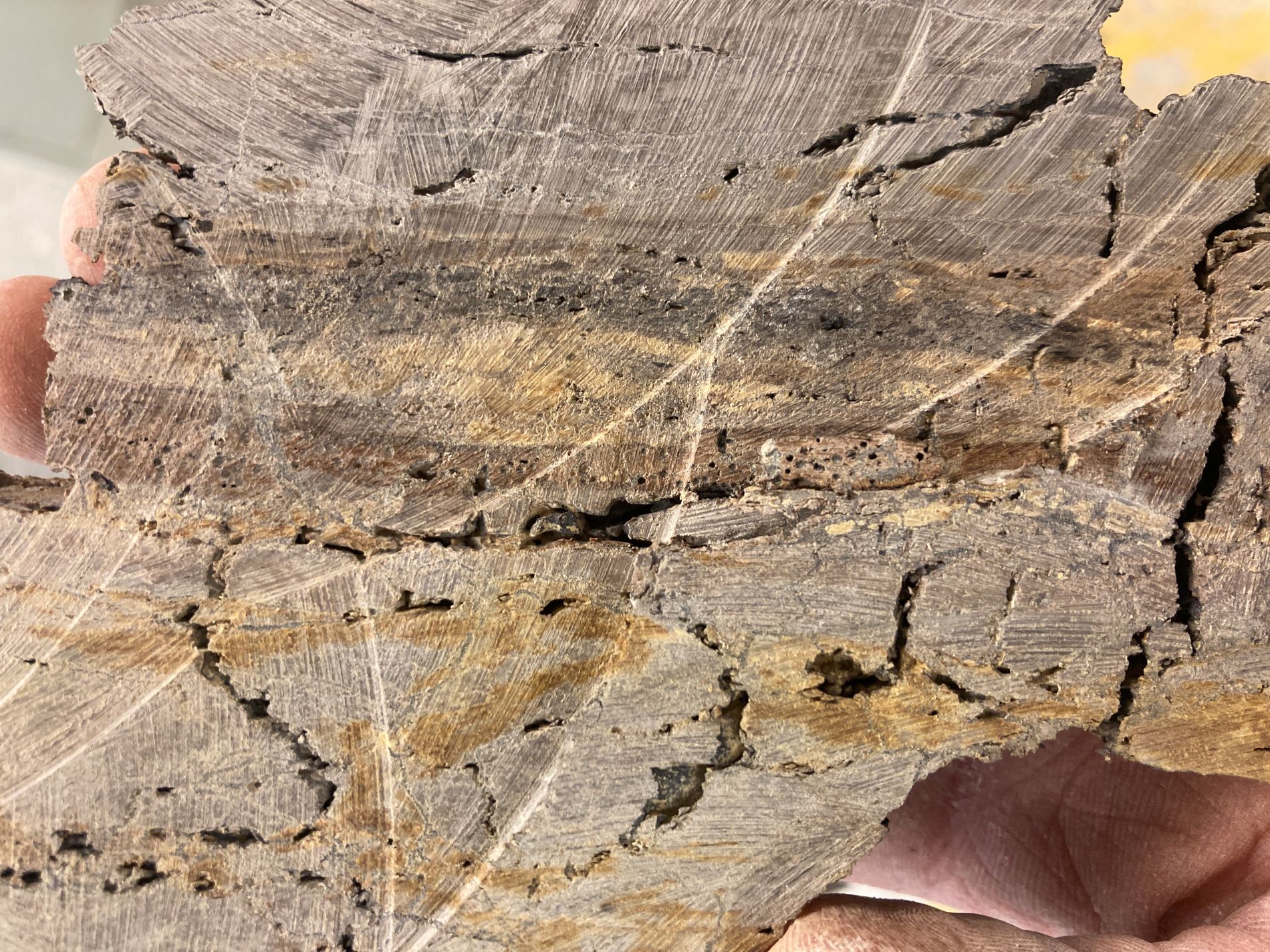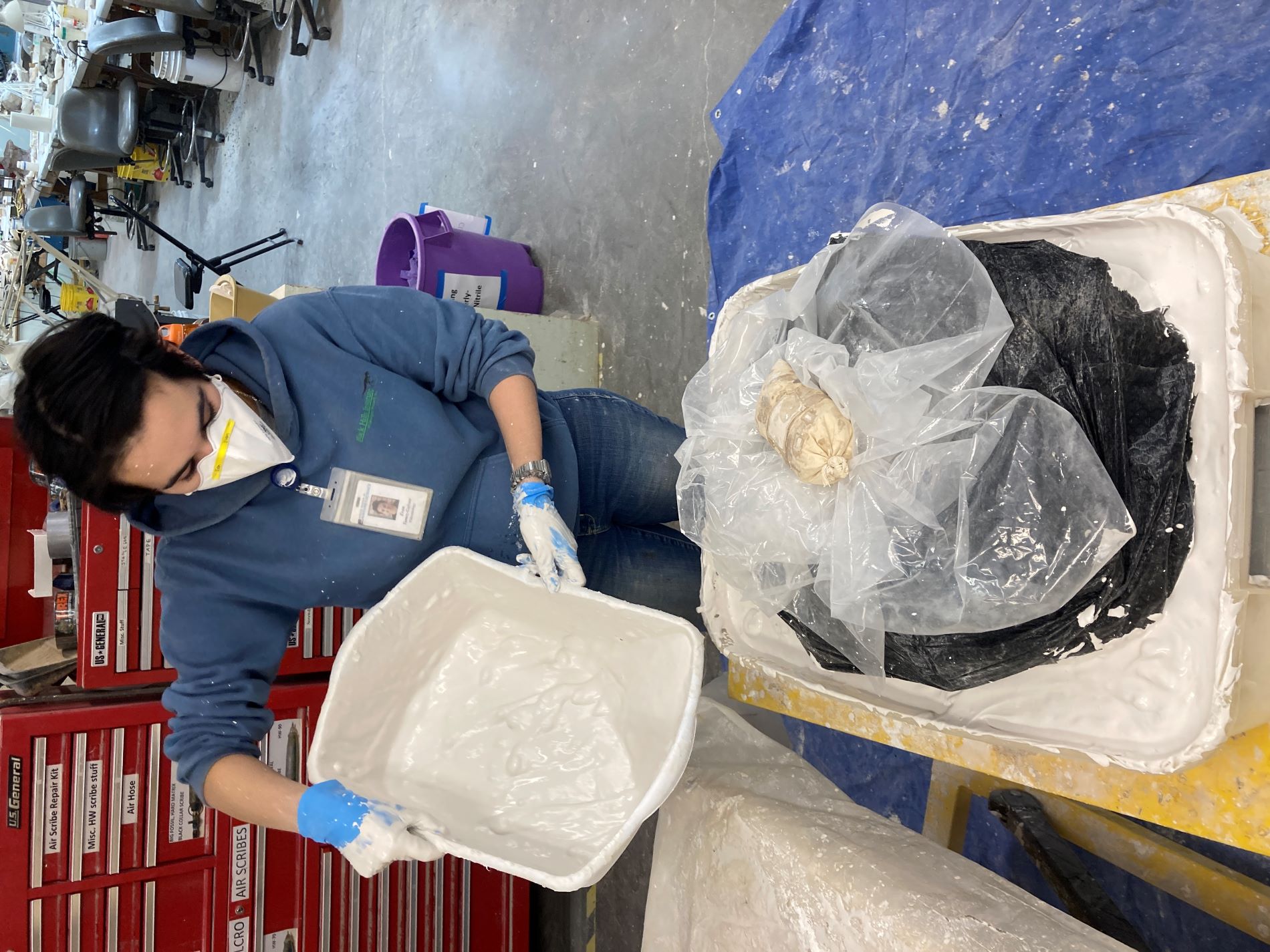One of Many Marvels in "Discovering Teen Rex"

Have you been to the "Discovering Teen Rex” experience yet? People from across Colorado and the region are coming to the Museum to see the live preparation of the incredible T. rex fossil and discover the amazing story of how it was found by three boys in North Dakota. Alongside the Teen Rex Prep Lab, there are several other fossils and artifacts in the temporary experience, including a rock that — if you know what to look for — tells the incredible story about one of the single worst days on Earth.
A remarkable piece of Earth's history can be seen: a stunning slice of rock that captures the geologic record of the Cretaceous/Paleogene (K/Pg) extinction event, which happened around 66 million years ago after an asteroid at least six miles wide struck near the Yucatan Peninsula in Mexico. For millions of years, the stone has held onto the story of this cataclysmic event that led directly to the end of the dinosaurs and the beginning of when mammals made their rapid rise to dominance; now you can see it at the Museum.

This slice of rock captures the geologic record of the Cretaceous/Paleogene (K/Pg) extinction, a cataclysmic event that led directly to the end of the dinosaurs. (Photo/ Rick Wicker)
“Our scientists, now with funding from the National Science Foundation, have been studying the K/Pg boundary for many years, and it’s thrilling to share this truly sublime object with our Museum guests. My team and I collected the K/Pg block in Wyoming and it represents one of the best samples of this pivotal moment in Earth's history, where we can clearly see the spherule layer that represents the single worst day for multicellular life on Earth. The layer marks the end of the age of dinosaurs and the origin of the modern world and the rise of mammals,” said Dr. Tyler Lyson, Curator of Vertebrate Paleontology.
The devastating event buried the world in sulfur and dust and caused widespread ecological devastation. Small animals, including mammals, ground-dwelling birds, crocodiles and turtles, were able to survive, but around 75% of life on Earth went extinct, including all non-avian dinosaurs. Amid the chaos, new species rapidly emerged and mammals soon took over the Earth, replacing the dinosaurs who had come before them.
In 2023, the Denver Museum of Nature & Science was awarded a prestigious collaborative research grant from the National Science Foundation's Frontier Research in Earth Sciences program to shed light on the ecological and environmental changes that occurred on land after the K/Pg mass extinction event. The nearly $3 million collaborative research grant, led by the Museum with a portion over $1.2 million, was the largest research grant ever received by the Museum.
Read more: Uncovering the Mysteries of Mammals | How the Museum Received its Largest Research Grant Ever

A cutting shows evidence of tiny round spherules that provide direct evidence of the asteroid impact in Mexico that triggered the mass extinction. (Photo/ Salvador Bastien)
The lower section of the slice represents the Cretaceous Period, the final chapter of the dinosaurs' reign. Above this, a thin, distinct layer of orange with tiny round spherules provides direct evidence of the asteroid impact in Mexico that triggered the mass extinction. Museum Fossil Preparator Salvador Bastien explains that these spherules are not fragments of the asteroid itself, but rather Earth materials that were superheated and thrown up into the sky during the impact. This molten debris from the impact cooled rapidly into glass beads and landed thousands of miles away in what is now known as the Wyoming Powder River Basin.
Slicing the rock slabs for study and display required collaboration with local partners. Since the Museum didn’t have the right tool for cutting the rock, scientists from the Earth Sciences Department reached out to Lyons Sandstone, a stone quarry in Boulder County with expertise in cutting all kinds of rocks. Using a large wire saw studded with industrial diamonds, Bastien and his team were able to slice through the rock samples and expose the fascinating geologic archive held within.

Fossil Preparator Evan Tamez-Galvan embeds the rock cutting in plaster. (Photo/ Salvador Bastien)
From there, the team transformed the slices into works of scientific art. After cutting open to rocks, Bastien and the team took them back to the Museum where they consolidated the open face of each slice with specialized glue, then sanded and polished them to display the extraordinary story hidden within the stone for the past millions of years.
"Each one is a unique snapshot of a pivotal moment in Earth's history and seeing them in person really brings home the magnitude of the changes our planet has undergone. It's an experience that can't be replicated through photos or descriptions alone,” Bastien said. "We welcome everyone to come to the Museum and see these incredible slices for themselves!"
Four K/Pg slices were prepared and are now in the Museum collection. The Museum has loaned one of the slices to the Betty Ford Alpine Botanical Gardens in Aspen, Colo. while the rest are housed in the Denver Museum of Nature & Science’s collection. The largest one is currently on display in the temporary experience “Discovering Teen Rex” where the public is invited to come and view the dramatic history of our planet in its original script.
This browser is no longer supported.
We have detected you are using a less secure browser - Internet Explorer.
Please download or use Google Chrome, Firefox or if using Windows 10, you may also use Microsoft's Edge browser.